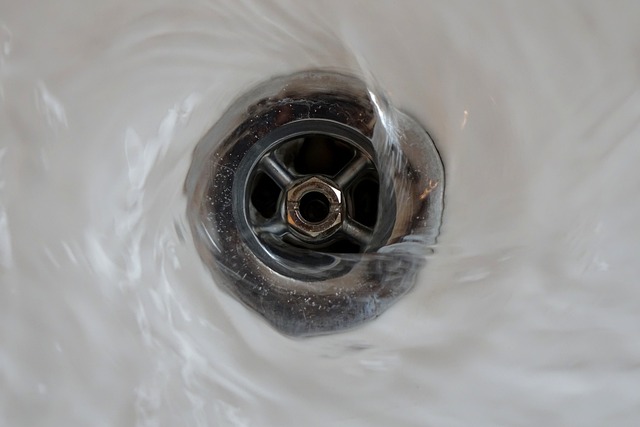How to Properly Clean Your Bathroom Sink Drain
How to Properly Clean Your Bathroom Sink Drain

Proper maintenance of your bathroom is essential when it comes to a healthy and hygienic home. While we can all agree on that, we rarely consider the sink drain when mentioning a clean bathroom.
Yet, this is where the majority of bacteria hide. No matter how clean your bathroom looks, if you notice that stinky smell coming from your sink, it is time to change how you do your chores.
The truth is, no matter how careful you think you are when it comes to flushing things down your sink, you should consider the amount of soap, toothpaste, and face wash that goes down daily
Unless you properly clean it afterwards, it slows down your drain and will sooner or later clog your sink. And we all know how unpleasant that can be.
Let’s avoid finding a plumber for an issue that we can easily avoid by learning how to clean bathroom sink drains.
Common Causes of Blocked Drains
Before we focus on the bathroom sink drain cleaning, let’s first discuss which are the primary causes for it getting clogged:
- Fat, oil and grease – Fats and oils are liquid, so there should not be much of an issue if we just flush them down the sink, right? Well, a reliable plumber would advise that they solidify once they end up in the drain and may block your pipes.
- Makeup and cosmetic debris – Powdery cosmetics such as foundation, blush, and others should never be washed down in the sink. They stuck to the inside of the pipes, accumulating over time and will eventually block them.
- Hair – Probably the number one reason behind many clogged drains. Hair that falls off when washing, shaving, or combing builds up over time and will slow down your drain. If not addressed on time, it will completely block it, and you may need to call a plumber.
- Soap scum – Bar soaps are not something you would consider when it comes to blocked drains. You need to know that this kind of soap leaves a thin film on the inside of your pipes, slowly building up over time. Once it becomes thick enough, it can stop the flow of water.
Signs of a Clogged Drain
Now that you know the most common causes for a drain to get clogged, you probably think this is 100% the case for your sink.
Well, you can easily find out if you have gotten yourself a plumbing issue you notice one of the following:
- Slow draining – If you notice that it takes longer for your sink to drain, that indicates a blocked drainage system.
- Gurgling sounds – Those are usually caused by air trying to escape the drain. If you hear gurgling sounds, that means you have a blockage in your pipes.
- Foul odours – When you have a blockage, it will trap water and debris. With time, stagnant water starts to stink, and you will notice a foul smell emanating from your sink. This can be especially unpleasant if you’ve recently remodelled your bathroom.
- Drain flies – If you notice drain flies, also known as moth flies, near a sink, that is a good indication that you have a clogged drain. This type of fly loves being around stagnant water; in this case, it is inside your pipes.
Tools for Cleaning Bathroom Sink Drains
So you probably have one or more of the signs. Then you should get ready for some cleaning! You don’t need to look for a plumbing company to get your drain clean.
Just grab the white vinegar, baking soda, boil some water, a sponge, and dish soap from your kitchen. Depending on the situation, you may also want to get yourself a drain snake.
How to Clean a Bathroom Sink Drain
Now that we have everything we need let’s get to work to have a clean bathroom sink drain!
Remove any clogs or debris
Let’s start with the obvious. If you notice any easy-to-reach clog, such as clumps of hair, use your fingers or any other tool to try and get it out. Dispose of it and run the faucet. This easy step may have resolved the issue!
It is a good idea to do this at least once a week to avoid the accumulation of debris and keep your sink smelling fresh.
Mix up a DIY vinegar cleaning solution
If you have some experience in maintaining your property, you have at least heard about the cleaning properties of vinegar.
If you are completely new, however, don’t fret. The recipe is straightforward. Mix a 50-50 ratio of distilled white vinegar and water, then add a dash of baking soda.
While soda and vinegar are excellent cleaning solutions, you must be careful when mixing them, so take your time. Add one tbsp of lemon to the mix to eliminate the vinegar smell.
So how much do you need? In most cases, one cup will be more than enough to do the trick. Pour it down the drain and leave it there for an hour or so.
Salt and boiling water
Now that you have left your magic potion for a while, it is time to rinse it properly. Get about 1L of water, mix it with a tablespoon of salt and boil it. Once done, pour it down the drain.
Hot water and liquid dish detergent
If you do not have or do not wish to use vinegar and baking soda, you have an alternative method. You can mix warm water with liquid soap and pour it down the drain for minor clogs. Follow that by running some hot water afterwards.
If the problem is more serious, then you should opt for the second method involving liquid dish detergent. Boil water and pour it down the drain to loosen up the clogs, then add some liquid dish on top and follow it with more boiling water.
Consider using a drain snake.
Every once in a while, you may end up with a clog that simply won’t budge no matter what you do. In such situations, you should grab a drain snake at the nearest hardware store.
There are different variations of the tool, so be sure to follow the manufacturer’s instructions when dislodging any remaining clumps in the drain.
Conclusion
Knowing how to clean your bathroom sink drain properly will significantly improve your health and eliminate the bad smells in that area of your home.
Remember to maintain it regularly and never pour fat, oil, and grease inside it.








